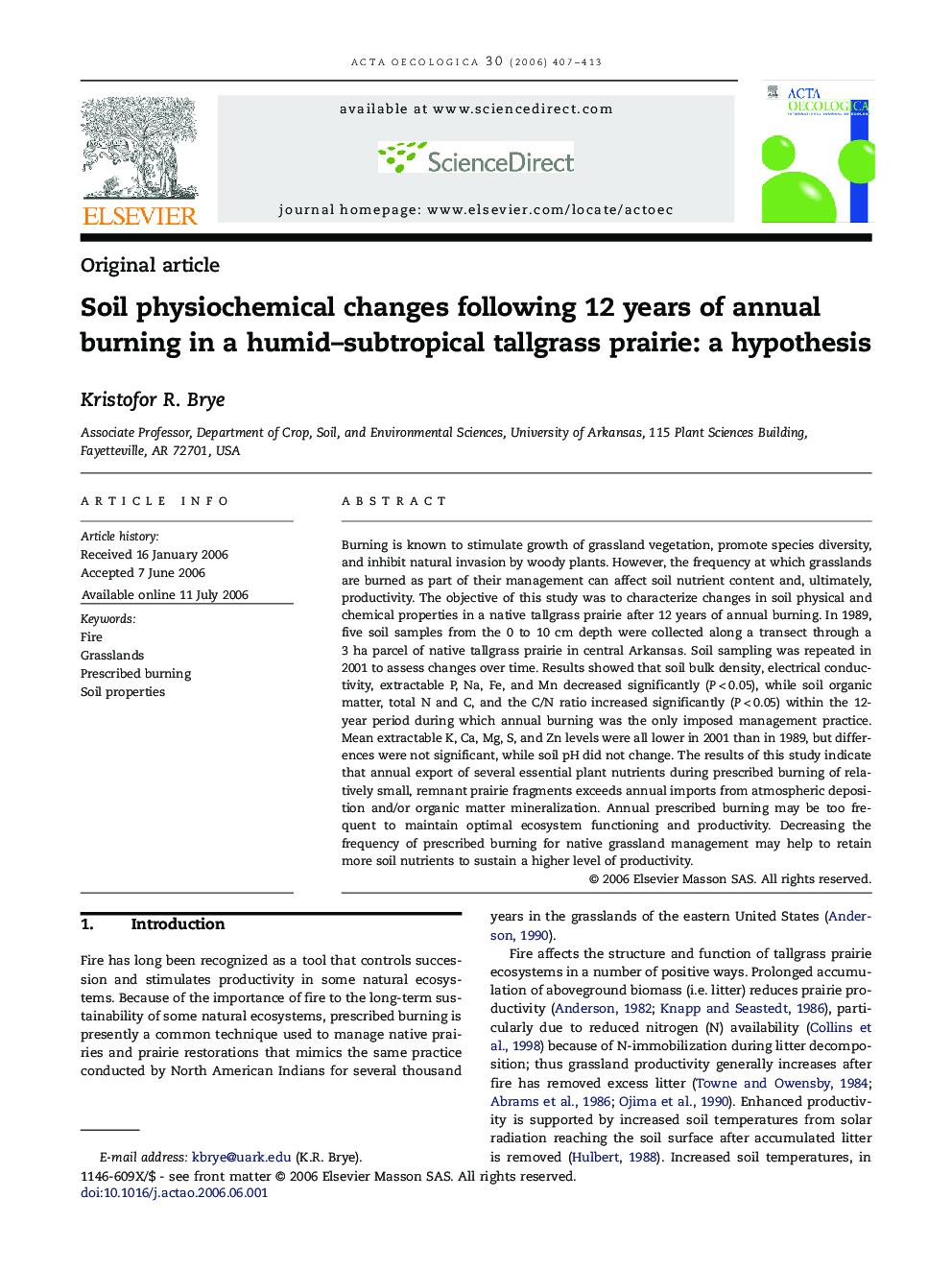| Article ID | Journal | Published Year | Pages | File Type |
|---|---|---|---|---|
| 4381718 | Acta Oecologica | 2006 | 7 Pages |
Burning is known to stimulate growth of grassland vegetation, promote species diversity, and inhibit natural invasion by woody plants. However, the frequency at which grasslands are burned as part of their management can affect soil nutrient content and, ultimately, productivity. The objective of this study was to characterize changes in soil physical and chemical properties in a native tallgrass prairie after 12 years of annual burning. In 1989, five soil samples from the 0 to 10 cm depth were collected along a transect through a 3 ha parcel of native tallgrass prairie in central Arkansas. Soil sampling was repeated in 2001 to assess changes over time. Results showed that soil bulk density, electrical conductivity, extractable P, Na, Fe, and Mn decreased significantly (P < 0.05), while soil organic matter, total N and C, and the C/N ratio increased significantly (P < 0.05) within the 12-year period during which annual burning was the only imposed management practice. Mean extractable K, Ca, Mg, S, and Zn levels were all lower in 2001 than in 1989, but differences were not significant, while soil pH did not change. The results of this study indicate that annual export of several essential plant nutrients during prescribed burning of relatively small, remnant prairie fragments exceeds annual imports from atmospheric deposition and/or organic matter mineralization. Annual prescribed burning may be too frequent to maintain optimal ecosystem functioning and productivity. Decreasing the frequency of prescribed burning for native grassland management may help to retain more soil nutrients to sustain a higher level of productivity.
